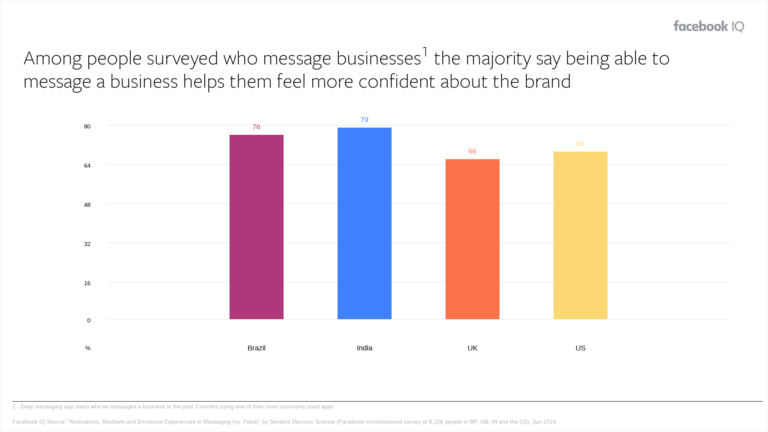In today’s digital world, businesses are continuously looking for new methods to improve customer service. One of the most significant developments in recent years has been the usage of social messaging. Indeed, this powerful technology is not only changing the way businesses connect with their clients, but it is also setting new benchmarks for service efficiency and satisfaction.
To illustrate this point, let’s look at how social messaging is revolutionizing customer service and why firms should embrace this development
Part 1 of 3: The Rise of Social Messaging

Social messaging has emerged as a critical component of customer service strategies, allowing businesses to connect with their customers where they are most active. Moreover, as social media platforms continue to dominate our daily communications, the integration of social messaging with customer service functions offers a seamless way for businesses to engage with their audience in real-time.
According to a report by Business of Apps, in 2021, the amount of messaging app annual users has reach 3.32 billion people (Curry, 2024).
Part 2 of 3: Benefits of Social Messaging in Customer Service

Instantaneous Communication
Real-time reaction capabilities are among social messaging’s most important benefits. According to MessageDesk, 74% of people respond to text messages from a business within an hour vs. 41% via email (Kuczynski, 2024). Furthermore, consumers want prompt service, and social media messaging meets that expectation. Hence, Instant messaging enables fast resolution of inquiries, resulting in heightened customer satisfaction.
Customized Exchanges
Customer experiences can be more individually tailored thanks to social messaging apps. Specifically, messages on apps like WhatsApp or Facebook Messenger can be customized to meet the specific demands of each user. As a result, customers’ perceptions of the brand may be improved by this personalization, encouraging trust and loyalty.
For instance, more than 66% of customers will feel more confidence about purchases when a company is accessible and engaged on a messaging app (Sentient Decision Science, 2018).

Increased Rates of Engagement
Comparing messaging applications to other communication channels, engagement rates are usually greater. For example, email open rates average about 20%, whereas text message open rates can reach up to 98% (Kuczynski, 2024).
Moreover, sending messages through these channels guarantees that crucial information reaches the client quickly because they are frequently read in a matter of minutes. This promptness is essential for promotions and other matters that have a deadline.

Economical Resolution
Utilizing social messaging for customer service can be less expensive than more traditional methods, and save up to nine times the purchasing cost (Messaging App Statistics 2024: The Most Popular Messaging Platforms & Beyond, 2024).
Additionally, with the use of chatbots and automated answers for frequently asked questions, it lessens the need for large call centres and can optimise operations. Therefore, this effectiveness allows the company to save expenses while upholding its high levels of service.
Part 3 of 3: Enhancing Social Messaging with Omnichannel Solutions

What Are Omnichannel Solutions?
Omnichannel solutions elevate customer service by delivering a consistent and unified experience across all platforms, including social messaging, email, voice calls, and more. As an example, Nubitel CX exemplifies this by integrating all communication channels into a single platform, ensuring that no message is siloed and every customer interaction is contextually aware and continuous.
Moreover, this seamless integration is crucial for companies aiming to provide smooth transitions between different communication modes, ultimately boosting customer satisfaction and loyalty.

Combined Client Profiles
The development of unified client profiles is one of the main advantages of omnichannel solutions. Particularly, businesses can combine client data from several touchpoints by merging social messaging with other communication channels. Service representatives may access entire conversation histories, preferences, and previous issues thanks to this full perspective of client interactions, which makes it possible for them to offer more individualised and effective help.
Regular and Contextual Participation
Regardless of the channel utilised, omnichannel solutions guarantee that consumer interactions stay contextual and consistent. A consumer may, for example, start a conversation via social media, carry it through email, and end it over the phone. By using an omnichannel strategy, customer care representatives may preserve the context of the interaction throughout several channels, saving clients’ time and aggravation.

Improved Response Times
Customers that use social media platforms anticipate prompt responses because of the instantaneous nature of these messages. Additionally, businesses can effectively manage and prioritise messages with omnichannel solutions, guaranteeing that questions posed through social media messaging are answered right away. On top of that, basic questions can be handled by automated chatbots, which can respond instantly and free up human agents to handle more complicated problems.
Increased Contentment with Clients
Enhancing an omnichannel approach with social messaging can greatly increase customer happiness. Besides, a positive and memorable customer journey is produced when omnichannel solutions are used in conjunction with the ease and speed of social messaging.
Conclusion: Future Prospects of Social Messaging
As social messaging becomes more integrated into customer service strategies, the potential for new technologies and approaches, such as artificial intelligence and machine learning, to further enhance these interactions is immense. What’s more, businesses that continue to innovate and adapt to these changes will not only survive but thrive in the competitive market.
In order to stay ahead of the digital curve, businesses should make sure they adopt unified communications, utilize omnichannel strategy, and invest in solutions. In addition, customer service of the future is here, and it’s more social, quick, and linked than it’s ever been.

